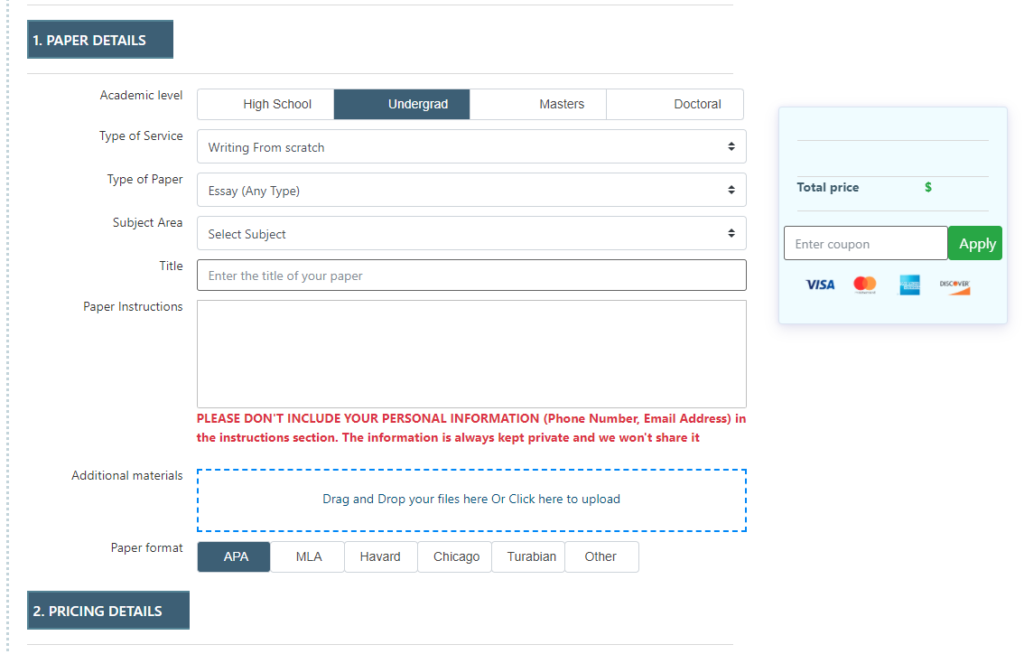Case Study pulmonary embolism
Complete this case study after reading the assigned module content in the text and reviewing the online presentation included in the learning module.
Read the following scenario and patient information and then complete the case study by answering each of the discussion questions listed on the last page.
(Note: images included in this case study are for demonstration purposes only and do not necessarily reflect this particular patient.)
Compose accurate and thorough answers including your rationale for any decisions made. Include a reference page listing all sources used (including the textbook). All sources must be listed using APA format.
Discussion questions:
1. Describe the pathophysiology of pulmonary embolism.
a. What clinical manifestations, if any, suggest a pulmonary embolism in the patient?
b. Identify 5 major risk factors of this patient for pulmonary embolism.
2. Explain how various imaging procedures are used in diagnosis or treatment of PE.
a. Radiography
b. CT
c. Sonography
d. Nuclear Medicine
e. Angiography
3. Identify the abnormal vital signs and lab/imaging results; and describe how these findings confirm the diagnosis of PE. (Which single clinical finding provides the strongest evidence of pulmonary embolus in this patient?)
4. Discuss possible complications related to this pathology that may affect the patient’s condition and require medical intervention to ensure patient well-being and safety during imaging procedures?
Pulmonary Embolism Case Study
(Case study modified from: Bruyere, H.J. (2009). 100 case studies in pathophysiology. Lippincott.)
History of Present Illness
Mrs. V.A. is a 30-year-old woman who presents to the hospital emergency room following 90minutes of chest pain, stating I have severe chest pain and I can’t seem to catch my breath. I think that I may be having a heart attack.
She describes the severity of her pain as 8 on a scale of 10. An hourand-a-half ago, she developed sharp and constant right-sided chest pain and right-sided mid-backpain. The pain became worse when she attempted to lie down or take a deep breath andimproved a little when she sat down. She also has had difficulty breathing. She denies anyfever, chills, or coughing up blood. She reports that she just returned home 36 hours ago followinga 13-hour flight from Tokyo.
Past Medical History
€¢ Migraines with aura since age 23
€¢ Mild endometriosis €“ 5 years
€¢ Positive for Protein S deficiency
€¢ One episode of deep vein thrombosis 2 years ago; treated with warfarin for 1 year
€¢ Acute sinusitis 1 year ago
Past Surgical History
€¢ Orthopedic surgery for leg trauma at age7
€¢ Ovarian cyst removed 10 months ago
Family History
€¢ Father has hypertension
€¢ Mother died from metastatic cervical cancer at age 49
€¢ Brother is alive and well
€¢ No family history of venous thromboembolic disease
Social History
€¢ Patient lives with her husband and 8-year-old daughter
€¢ Monogamous relationship with her husband of 10 years; sexually active
€¢ 12 pack-year smoking history; currently smokes 1 pack per day
€¢ Business executive with active travel schedule
€¢ Negative for alcohol use or intravenous drug abuse
€¢ Occasional caffeine intake
Medications
€¢ 30 g ethinyl estradiol with 0.3 mg norgestrel €“ 4 years
€¢ Amitriptyline 50 mg po Q HS
€¢ Cafergot 2 tablets po at onset of migraine, then 1 tablet po every 30 minutes PRN
€¢ Metoclopramide 10 mg po PRN
€¢ Ibuprofen 200 mg po PRN for cramps
€¢ Multiple vitamin 1 tablet po QD
€¢ Denies taking any herbal products
Review of Systems
€¢ (€“) cough or hemoptysis
€¢ (€“) headache or blurred vision
€¢ (€“) auditory complaints
€¢ (€“) lightheadedness
€¢ (€“) extremity or neurologic complaints
€¢ All other systems are negative
Allergies
€¢ Demerol (makes me goofy)
€¢ Sulfa-containing products (widespread measles-like, pruritic rash)
Physical Examination and Laboratory Tests
General Assessment:
€¢ The patient is a well-developed white woman who appears slightly anxious, but otherwise isin no apparent distress.
Vital Signs:
€¢ BP 126/75
€¢ RR 40, labored
€¢ O2SAT 99% (room air)
€¢ P 105, regular
€¢ T 98.6°F (oral)
€¢ WT 139 lb
€¢ HT 5’5”
Skin
€¢ Fair complexion
€¢ Normal turgor
€¢ No obvious lesions
Head, Eyes, Ears, Nose, and Throat
€¢ Pupils equal, round, and reactive to light and accommodation
€¢ Extra-ocular muscles intact
€¢ Fundi are benign
€¢ Tympanic membranes clear throughout with no drainage
€¢ Nose and throat clear
€¢ Mucous membranes pink and moist
Neck
€¢ Supple with no obvious nodes or carotid bruits
€¢ Normal thyroid
€¢ Negative for jugular vein distension
Cardiovascular
€¢ Rapid but regular rate
€¢ No murmurs, gallops, or rubs
Chest/Lungs
€¢ No tenderness
€¢ Subnormal diaphragmatic excursion
€¢ No wheezing or crackles
Abdomen
€¢ Soft with positive bowel sounds
€¢ Non-tender and non-distended
€¢ No hepatomegaly or splenomegaly
Breasts
€¢ Normal with no lumps
Genitourinary/Rectal
€¢ No masses or discharge
€¢ Normal anal sphincter tone
€¢ Heme-negative stool
Musculoskeletal/Extremities
€¢ Prominent saphenous vein visible in left leg with multiple varicosities bilaterally
€¢ Peripheral pulses 1- bilaterally
€¢ No cyanosis, clubbing, or edema
€¢ Strength 5/5 throughout
€¢ Both feet cool to touch
Neurological
€¢ Alert and oriented to self, time, and place
€¢ Cranial nerves II€“XII intact
€¢ Deep tendon patellar reflexes 2+
Laboratory Blood Test Results
Electrocardiography
€¢ Sinus tachycardia
Chest X-ray
€¢ Left lower lobe infiltrates consistent with pulmonary hemorrhage
€¢ Prominent left hilar markings
(Reprinted with permissionfrom Kahn GP and JP Lynch. Pulmonary Disease Diagnosis and Therapy: APractical Approach. Philadelphia: Lippincott Williams & Wilkins, 1997.)
Echocardiography
€¢ Ventricular wall movements within normal limits
Lower Extremity Venous Duplex Ultrasonography
€¢ Both right and left lower extremities show abnormalities of venous narrowing, prominentcollateral vessels, and incompressibility of the deep venous system in the popliteal veins.These findings are consistent with bilateral DVT.
V/Q Scan
€¢ Perfusion defect at right base. Some mismatch between perfusion abnormality and ventilationof right lung, suggesting an intermediate probability for pulmonary embolus.
Pulmonary Angiogram
€¢ Abrupt arterial cutoff in peripheral vessel in right base
Clinical Course
The patient was initially treated with thrombolytic therapy which was successful in dissolving the acute clot. She then received IV infusion of heparin with 2 days of pneumatic compression treatment. Her acute symptoms had subsided and a follow up VQ scan revealed normal findings.
She was discharged with prescribed oral warfarin, compression stockings and instructions regarding preventative steps to follow during travel. She was advised to schedule a follow up visit as soon as possible.
Discussion questions:
1. Describe the pathophysiology of pulmonary embolism.
a. What clinical manifestations, if any, suggest a pulmonary embolism in the patient?
b. Identify 5 major risk factors of this patient for pulmonary embolism.
2. Explain how various imaging procedures are used in diagnosis or treatment of PE.
a. Radiography
b. CT
c. Sonography
d. Nuclear Medicine
e. Angiography
3. Identify the abnormal vital signs and lab/imaging results; and describe how these findings confirm the diagnosis of PE. (Which single clinical finding provides the strongest evidence of pulmonary embolus in this patient?)
4. Discuss possible complications related to this pathology that may affect the patient’s condition and require medical intervention to ensure patient well-being and safety during imaging procedures?
TO ORDER FOR THIS QUESTION OR A SIMILAR ONE, CLICK THE ORDER NOW BUTTON AND ON THE ORDER FORM, FILL ALL THE REQUIRED DETAILS THEN TRACE THE DISCOUNT CODE,
TYPE IT ON THE DISCOUNT BOX AND CLICK ON €˜USE CODE’ TO EFFECT YOUR DISCOUNT. THANK YOU








